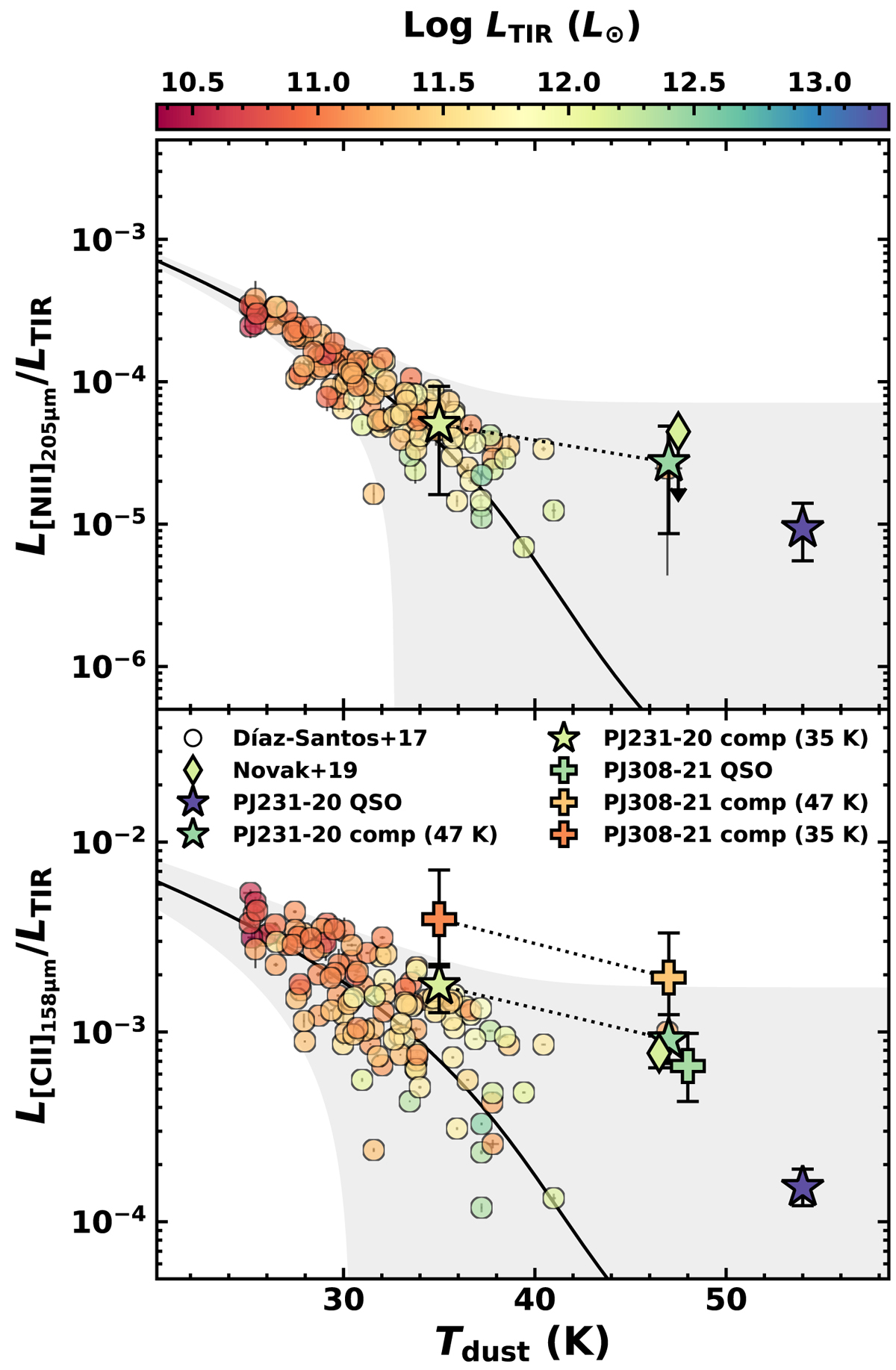Fig. 6.

[NII]205 μm and [CII]158 μm line deficits (top and bottom panel, respectively) with respect to the total IR luminosity (LTIR(8 − 1000 μm)) for quasars PJ231−20 and PJ308−21 and the companion galaxies and the LIRG sample of Díaz-Santos et al. (2017) as a function of dust temperature and color-coded by log LTIR. We also report the measurements obtained for the z = 7.54 quasar ULAS J1342+0928 (Novak et al. 2019). The sources in system PJ231−20 are indicated by stars, and those in system PJ308−21 are marked with crosses. For the companion galaxies we report the cases with assumed dust temperatures of 47 K and 35 K. These points are connected by a dashed line. The solid lines are the best fit to the LIRG sample performed in Díaz-Santos et al. (2017) using the model Lline/LFIR = ϵ0exp[( − S63/S158)/δ] with (ϵ0, δ) = ((1.26 ± 0.16) × 10−3, 0.50 ± 0.04) for the [NII]205 μm line, and (ϵ0, δ) = ((14.0 ± 0.9) × 10−3, 0.68 ± 0.04) for [CII]158 μm line. We scaled the best fits by a constant factor because different FIR luminosity definitions were employed by Díaz-Santos et al. (2017). The best-fit scaling values are 0.56 for [NII]205 μm line and 0.44 for [CII]158 μm line. The gray shaded area represents the 1σ scatter of the relation. The Novak et al. (2019) points were slightly shifted along the dust temperature axis (assumed to be 47 K) for a better visualization of the data.
Current usage metrics show cumulative count of Article Views (full-text article views including HTML views, PDF and ePub downloads, according to the available data) and Abstracts Views on Vision4Press platform.
Data correspond to usage on the plateform after 2015. The current usage metrics is available 48-96 hours after online publication and is updated daily on week days.
Initial download of the metrics may take a while.


